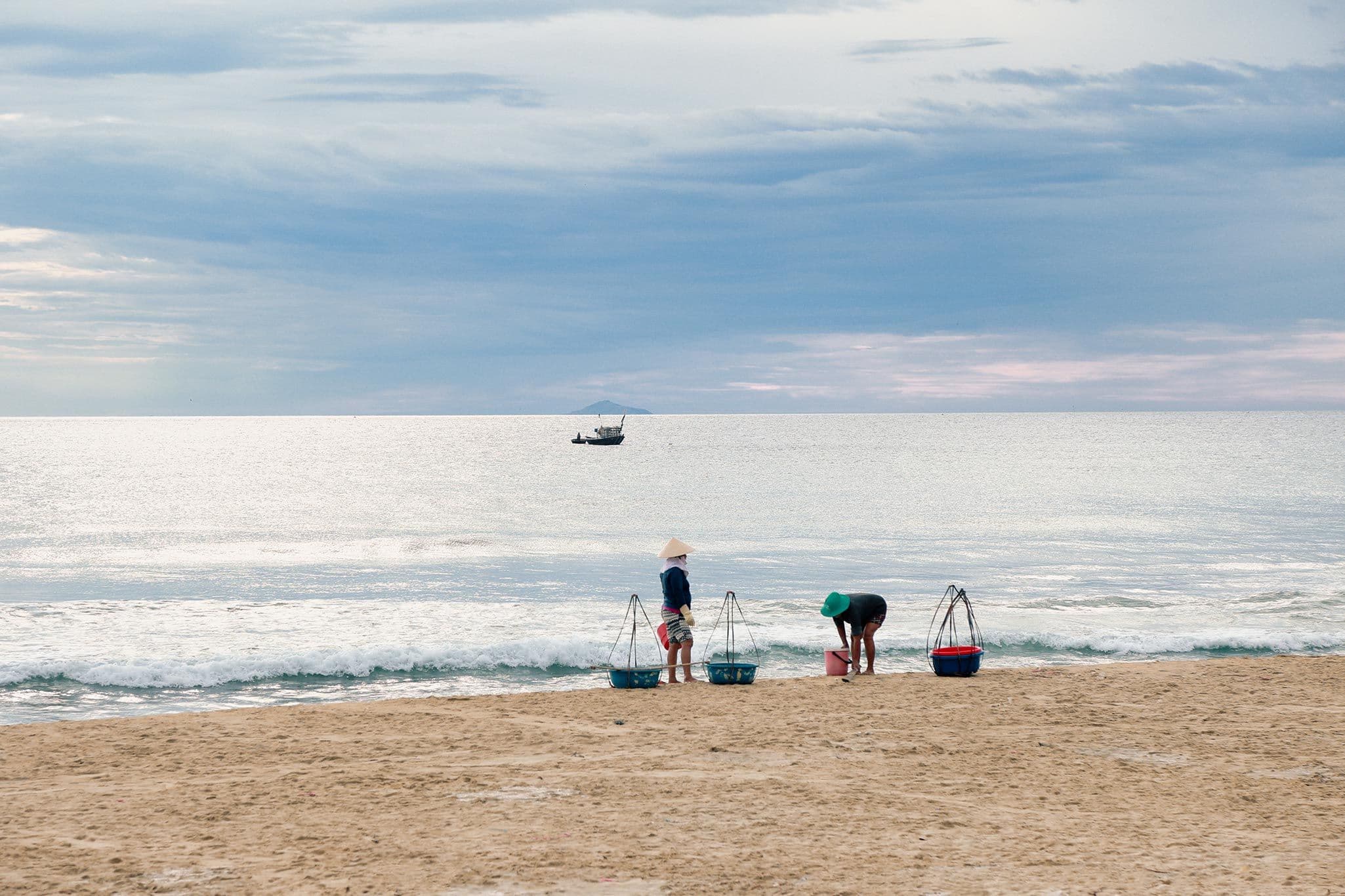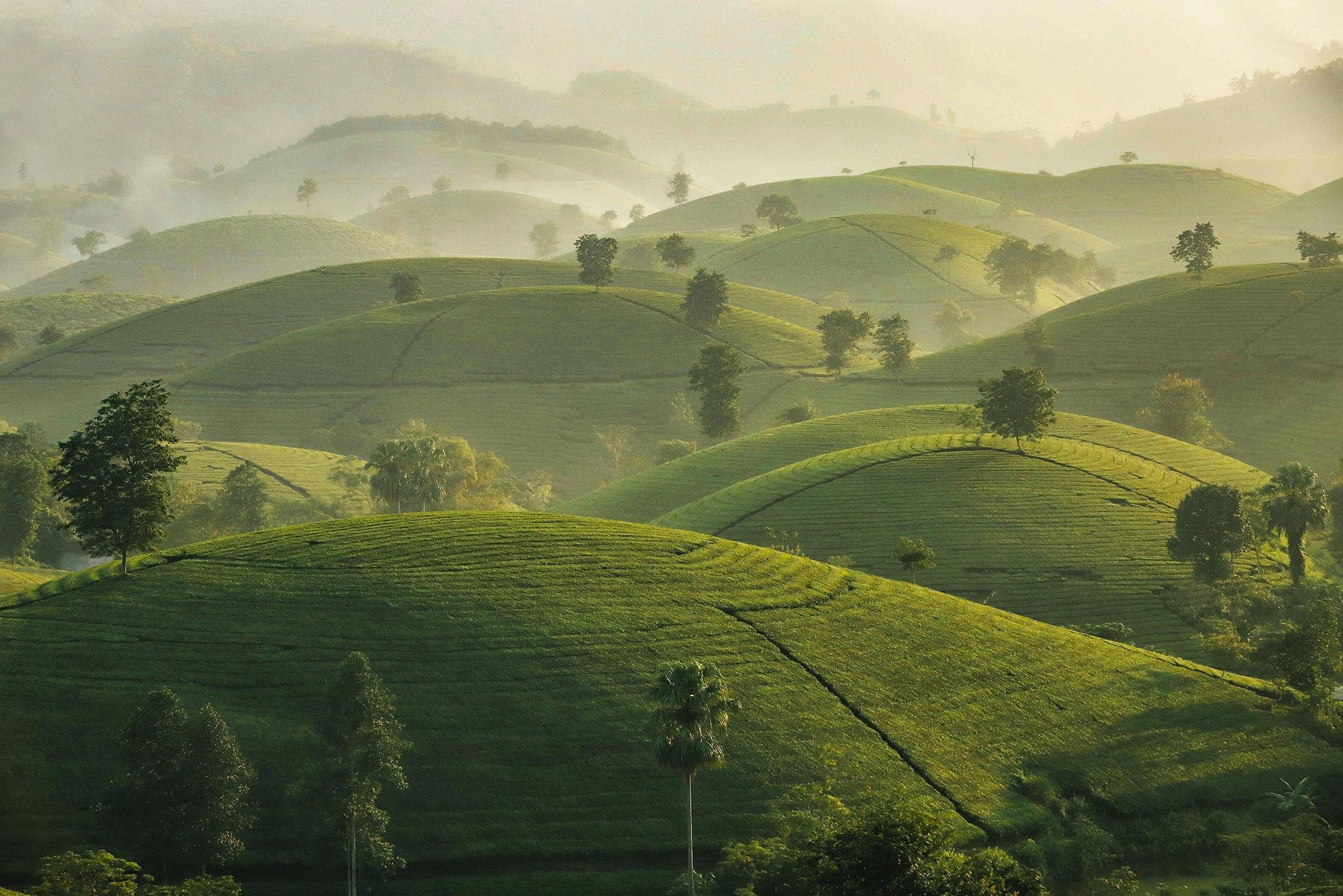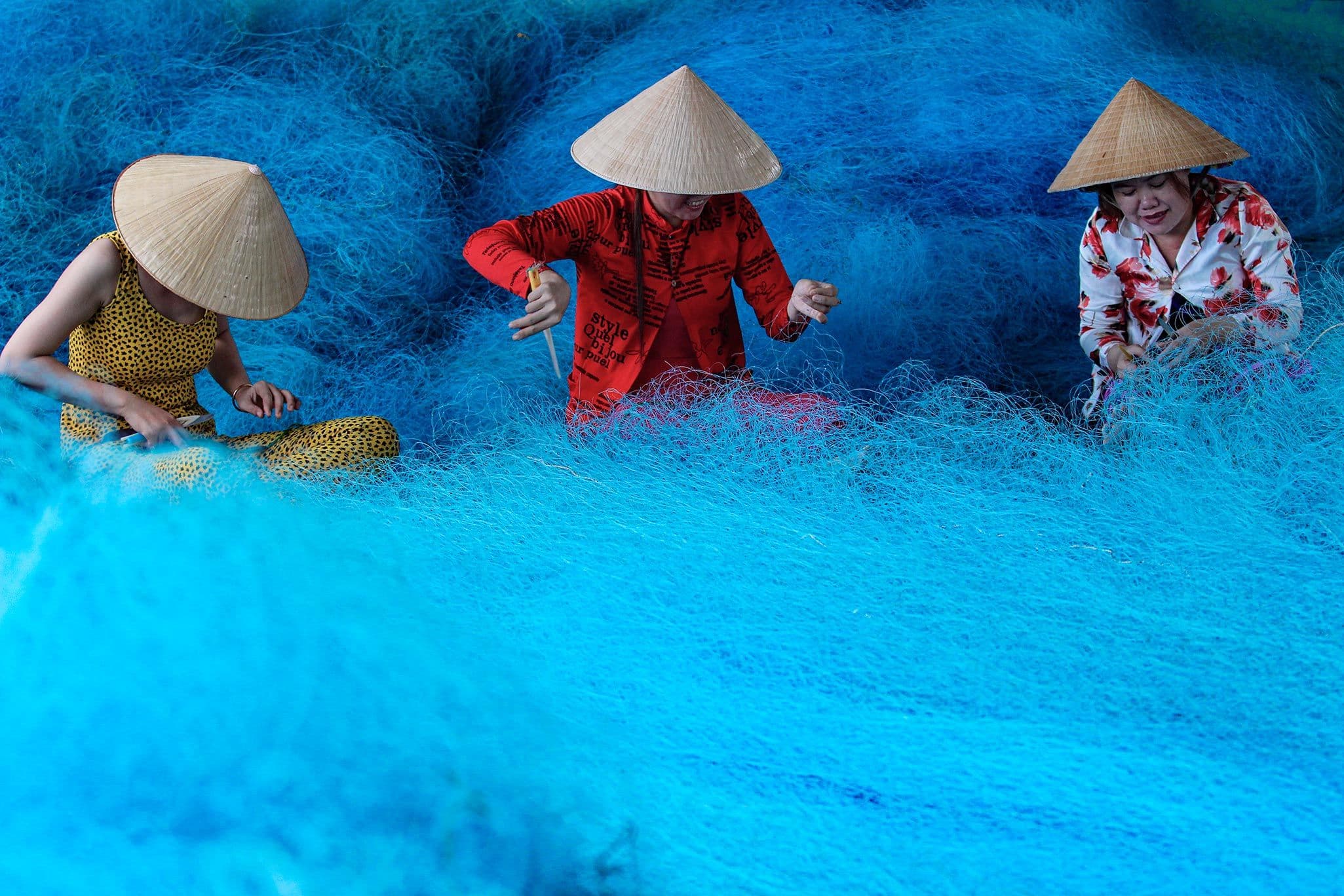
- 20 best places to visit in Dalat Vietnam
- 1. Linh Phuoc Pagoda
- 2. Linh Son Pagoda
- 3. Thien Vuong Co Sat Pagoda
- 4. Datanla Waterfall
- 5. Pongour Falls
- 6. Prenn Falls
- 7. Elephant Falls
- 8. Crazy House
- 9. Than Tho Lake (the Lake of Sighs)
- 10. Xuan Huong Lake
- 11. Truc Lam Zen Monastery
- 12. Dalat Flower Park
- 13. Valley of Love
- 14. Dalat Railway Station
- 15. Dalat Night Market
- 16. Bao Dai’s Summer Palace
- 17. Lat Village (Xa Lat)
- 18. French Quarter
- 19. Lam Dong Museum
- 20. Bidoup Nui Ba National Park
Nestled in the mountains of Vietnam's Central Highlands, Da Lat is breathtakingly beautiful, with lush green hills and towering waterfalls. Its temperate climate makes it the perfect place to escape the heat or cold elsewhere, and there are plenty of activities and sights to experience. These are the 20 Best Places To Visit In Dalat Vietnam.
Choose FTrip's tour now to have a great experience in Indochina:
Learn more: Top 21 Best places to visit in Vietnam in 2023
Read more:
- 10 DAYS IN VIETNAM ITINERARY – BEST VIETNAM 10 DAY ITINERARY FOR YOU
- 3 WEEK TRIP TO VIETNAM – A BEST ITINERARY IN 3 WEEK
20 best places to visit in Dalat Vietnam
1. Linh Phuoc Pagoda
This temple stands out because of its busy, colorful decorations, many of which are mosaics. Within the temple are bas-reliefs, also mosaics, portraying the history of the Gautama Buddha and the creation of the Lotus Sutras. On the grounds is a 49m-long dragon made from 12,000 bottles, which gave the site another name: Ve Chai ([Reused] Bottle) Pagoda.
Read more: BEST TIME TO VISIT VIETNAM & WEATHER EACH MONTH

2. Linh Son Pagoda
Spring is the best time to visit this elegant pagoda, newly built (compared to other, more historic places of worship) in a simple, evocative style, its grounds lush with vegetation and flora. (In addition to decorative plant life, temple residents also tend to tea and coffee plants.) The center of the main ceremonial hall is a bronze Gautama Buddha seated on a lotus, weighing nearly 1300 kg.

3. Thien Vuong Co Sat Pagoda
Located on a tall hill, well away from busy Da Lat City, this Pagoda was built by a monk of Teochew descent in 1958. In addition to walking, you can also rent horses to ride up to the pagoda. In keeping with its origins, the pagoda’s architectural style is very strongly influenced by similar Cantonese buildings. In addition to three fragrant sandalwood Buddha statues, the pagoda also has a magnificent garden.

4. Datanla Waterfall
This beautiful fall is said to have been a frequent meeting place for the star-crossed lovers of the Central Highlands, K’lang and H’biang - and it seems they had exquisite taste. Silver water flows serenely through the rocks before tumbling down from heights of 20m. However, adrenaline seekers can still enjoy plenty of activities, such as canyoning, rappelling, and kayaking. Cable cars are available for less-adventurous people who still want to experience the beauty of the falls.
5. Pongour Falls
This seven-tiered fall is 50km away from Da Lat, surrounded by a primeval forest with diverse flora and fauna. Legend has it that it is the final resting place of a beautiful, talented K’Ho chieftain named Kanai. She tamed four gigantic rhinos that served as faithful workers on farmland and soldiers to protect her village. When she died, her stream of hair turned into the flowing water, and the rhinos’ horns turned to stone. This fall is unique for having its own holiday; on the first full moon of the lunar year, young people gather here to find partners and fall in love.

6. Prenn Falls
This fall serves as a herald for Da Lat - when you hear its rushing waters duetting with pine trees singing in the wind, you know you’re almost there. It serves as the geographical first stop in a tour of the City of a Thousand Flowers. Cultural events and rituals are also held here on appropriate days, as well as art performances from various ethnic groups.
7. Elephant Falls
The almighty roars from this fall, audible day and night, led the locals to liken it to a herd of elephants. The small stones by the falls are also compared to elephants, but because of tragic stories - they were either petrified by a chieftain’s daughter mourning her lost love, or turned to stone after mourning the death of K’lang and H’biang. Like many of the natural sights here, the falls remain a piece of pristine nature, defiant against human growth.

8. Crazy House
Among the more conventional but beautiful French villas common in this resort town, the Crazy House stands out like a fever dream of a nature lover. The structure resembles a treehouse with sinuous branches and natural elements - mushrooms, shells, caves, spiderwebs -, molded from steel, wood, and concrete. Like a living thing, it continues to grow today, with the architect constantly thinking about expansion and improvement.
9. Than Tho Lake (the Lake of Sighs)
A mistranslation gave the lake its name; originally le Lac des Soupirs evokes the murmuring of breezes through the surrounding forest, but the Vietnamese name plays on the second meaning of the last word: sighs.
Either way, the Lake of Sighs is certainly a fitting name. Its fog-wreathed beauty has an air of gloominess, at least two tragic love stories have been associated with it, and it has inspired numerous poems and songs that tug at the heartstrings.

10. Xuan Huong Lake
At the heart of Da Lat City is the manmade Xuan Huong Lake, whose name means “Spring Fragrance” after the aroma of the surrounding plants. It’s a well-loved choice for a leisurely stroll on foot or a horse carriage ride for visitors.
For over a century, the lake has been a mirror for the city, enhancing its elegant beauty and providing contrast to the endless pine forests lest they become too overwhelming.

11. Truc Lam Zen Monastery
Part of the Truc Lam Yen Tu school of Zen Buddhism, this monastery is one of the three largest of its kind in Vietnam. The space is surrounded by vast areas of pine trees, verdant hills and mountains, and the calm waters of Tuyen Lam Lake.
As the bells of the pagoda sing out into this marvel of nature, you can leave all your cares behind to re-discover inner peace deep within yourself.

12. Dalat Flower Park
Over 100 species of flowers call the city’s flower park home. With each season, the park’s appearance changes, as artists carefully groom the flowers and showcase them alongside charming decorations. This 7000m2 space plays host to annual flower festivals that throng with locals and visitors alike.
13. Valley of Love
Deep within the hills, blessed with a clean, refreshing atmosphere decorated with lush plant life and peaceful waters, the valley is a must-see for lovers - and lovers of romance. The human touch includes wonders of the world such as the Roman Coliseum or the Sydney Opera House recreated in miniature, animals constructed from plants, and even carved wooden owls perched on branches. There is also a massive heart-shaped hedge maze to get lost in (hopefully not literally so!)
14. Dalat Railway Station
This is a place of records, such as “the oldest rail station in Vietnam and Indochina” (shared with Hai Phong Railway Station), “home to the only steam engine in Da Lat”, and more. Initially built as a station for transportation, today it has dwindled down to only one rail route strictly for tourist purposes.
The train trip is slow and loud, but the view is spectacular and the time to enjoy it is plentiful - a true case where the journey matters more than the destination.

15. Dalat Night Market
This market, right in the city center, is heaven for shoppers and food lovers. At indoor and outdoor shops, you can purchase a dizzying array of things: fresh produce, every dish imaginable from sweet to savory, tea, fruit - preserved, candied, jellied -, grilled snacks on sticks, warm woolen gear (a necessity of the year-round chill) and cute knitted/crocheted decorations, handicrafts, and so much more.
16. Bao Dai’s Summer Palace
The last emperor of the Nguyen dynasty, and of feudal Vietnam, had a summer palace built in Da Lat to holiday and hunt at. After his abdication and subsequently becoming the Chief of State, he worked and received important visitors here as well.
Many of his and his family’s personal effects are still kept here, such as some of the imperial jewels, the piano that Empress Nam Phuong and the three princesses once played, and horns from wild buffaloes that the Emperor shot.

17. Lat Village (Xa Lat)
Home to ethnic minorities, mainly the K’Ho, this ancient village of stilt houses still preserves the traditional beauty and lifestyle of the Central Highlands. Here, brocade is still woven, gongs still ring out sonorously at festivities, and chickens, pigs, as well as other animals are still roasted, smoked, and shared as they have been for centuries. Communal rice wine is drunk out of pipes, the lingering aroma and taste coaxing visitors to stay - have one more sip, listen to one more song, and dance one last time around the bonfire.
18. French Quarter
These pastel symmetrical buildings no doubt contribute greatly to Da Lat’s style and flair - and they’re excellent for photo ops, too. The Pedagogical College of Da Lat (formerly the Lycée Yersin) is a functioning university recognized by the World Association of Architects because of its historic value and impressive architecture.
The Hotel du Parc and Cafe la Poste serve as Da Lat’s answer to the Sofitel Metropole Hanoi or Continental Saigon Hotel. Scattered villas, part of the town’s past as a French-run resort, can still be seen from the outside - as most of them are crumbling and abandoned.
For a touch of religion, there’s the pretty-in-pink Domaine de Marie, and the Da Lat Cathedral (also known as the Chicken Church thanks to the rooster perched atop the building).

19. Lam Dong Museum
The Museum serves as the foremost (if not the only) authority on the province’s past. Major themes of the exhibits include the nature of Lam Dong, Da Lat’s past and future, the unique cultures of local ethnic groups, and the province’s contribution towards the anti-colonial resistance and post-war reconstruction. They also have two fully-recreated stilt houses of the Ma and K’Ho people respectively, which visitors can tour with a K’Ho guide speaking on their own culture. Traditional games and handicraft experiences are also held amidst magnificent nature.
20. Bidoup Nui Ba National Park
Dubbed “the rooftop of the Central Highlands”, this national park is home to the tallest mountains of the Lam Vien highlands - Bidoup Mountain at 2,287m and Nui Ba (Lady/Matron Mountain) at 2,167m.
The atmosphere is ideal for a dizzying array of flora and fauna to grow, many of which are endemic to Vietnam and sadly endangered by human life. The IUCN Red List features 96 endemic and 62 rare plant species, and 32 animal species, out of the over 1,933 flora and over 441 fauna species that live here.

Compared to the golden trio of regional capitals (Hanoi, Hue, and Ho Chi Minh City), or the touristy beach towns of (Da Nang, Nha Trang, and beyond), Da Lat is one of Vietnam's best-kept secrets. With its mild climate, vibrantly diverse culture, and stunning scenery, the city invites friends from around the world to come and explore all it has to offer, and makes them promise to return for more. With the article best places to visit in Dalat Vietnam, Ftrip hopes you have had more useful information.










